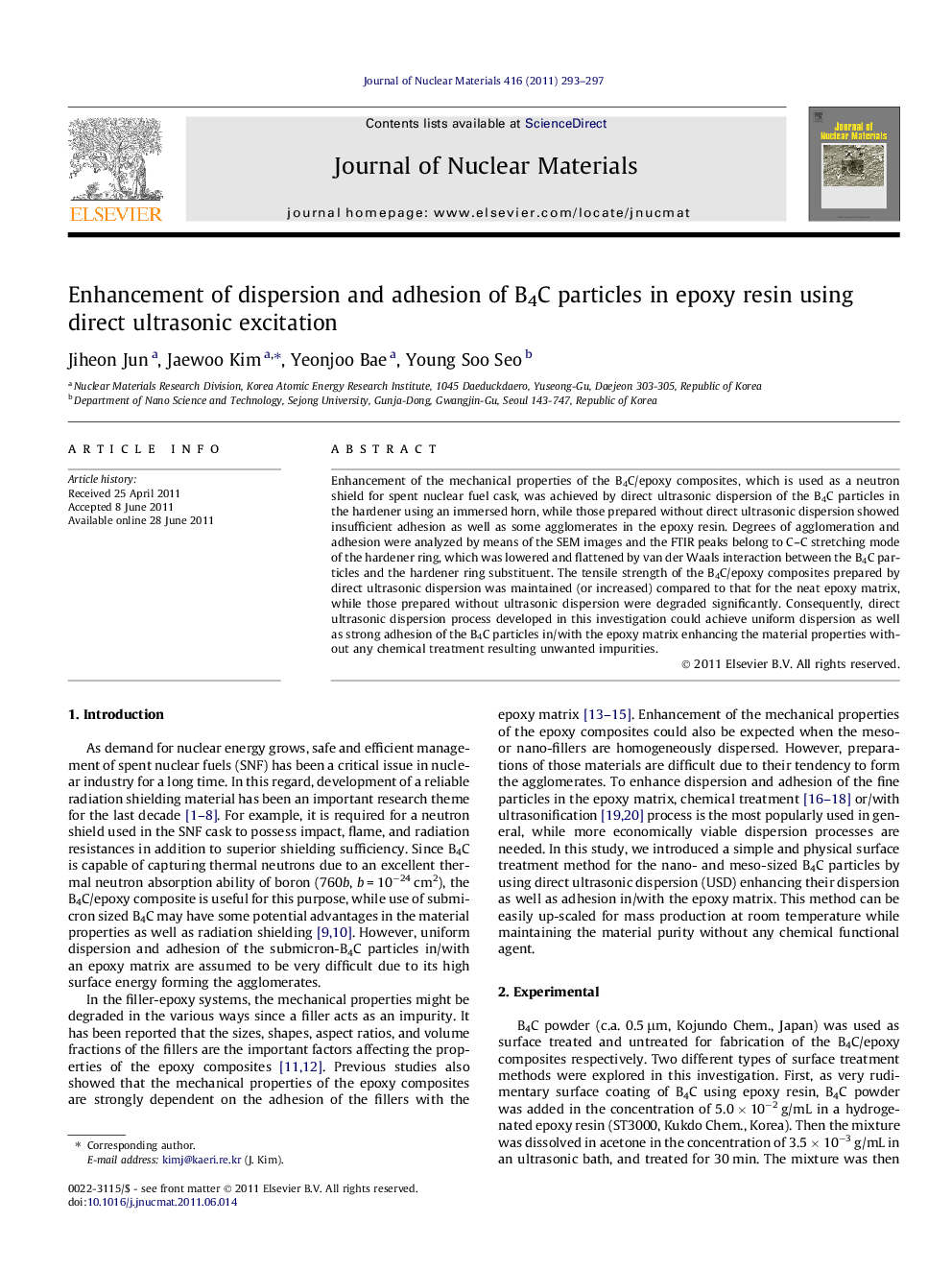| کد مقاله | کد نشریه | سال انتشار | مقاله انگلیسی | نسخه تمام متن |
|---|---|---|---|---|
| 1566768 | 999825 | 2011 | 5 صفحه PDF | دانلود رایگان |

Enhancement of the mechanical properties of the B4C/epoxy composites, which is used as a neutron shield for spent nuclear fuel cask, was achieved by direct ultrasonic dispersion of the B4C particles in the hardener using an immersed horn, while those prepared without direct ultrasonic dispersion showed insufficient adhesion as well as some agglomerates in the epoxy resin. Degrees of agglomeration and adhesion were analyzed by means of the SEM images and the FTIR peaks belong to C–C stretching mode of the hardener ring, which was lowered and flattened by van der Waals interaction between the B4C particles and the hardener ring substituent. The tensile strength of the B4C/epoxy composites prepared by direct ultrasonic dispersion was maintained (or increased) compared to that for the neat epoxy matrix, while those prepared without ultrasonic dispersion were degraded significantly. Consequently, direct ultrasonic dispersion process developed in this investigation could achieve uniform dispersion as well as strong adhesion of the B4C particles in/with the epoxy matrix enhancing the material properties without any chemical treatment resulting unwanted impurities.
► Enhanced adhesion and dispersion of B4C particles in epoxy resin was achieved.
► FTIR spectrum was used for examination of B4C adhesion with epoxy resin.
► Direct ultrasonic excitation causes enhanced surface treatment of B4C.
► We developed an epoxy based neutron shield with higher mechanical properties.
Journal: Journal of Nuclear Materials - Volume 416, Issue 3, 30 September 2011, Pages 293–297